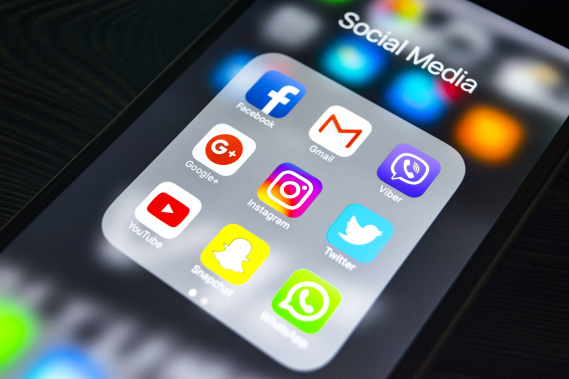
A pay per Click advertising firm is a great way to increase your online presence. They offer a wide range of strategies that will increase the visibility of your brand.
PPC Marketing Firm
Pay per Click Marketing can help you manage and develop your digital marketing campaigns. They can also analyse your current advertising strategy to make suggestions for improving your campaign's performance.
It is possible to pay a lot for a pay per view advertising campaign. It depends on the type of campaign, the size of your budget and the target demographics. Some companies charge a percentage while others charge a flat fee.
Pay per view marketing firms can provide services such a keyword research, campaign design, and management. They can also optimize landing pages or ads to maximize conversions.

A free audit of your Google Ads account can be provided by some agencies. They will evaluate your competition, keywords, as well as other aspects of campaigns to find ways to improve them.
A well-respected PPC agency will also carry out a competitive assessment to help identify any blind spots or how your competition uses paid media. The agency will then create a strategy plan that will help you succeed.
These companies can also provide a range other marketing services such email and social marketing. They can help you with content development, branding, and web design.
To create winning strategies, a top pay-per-click agency will conduct a thorough analysis of your company and industry to help you develop a marketing strategy that works. You will get a strong competitive advantage by using their premium tools.
Writing and implementing the ad copy: A pay per click agency will write the copy for your ads, and they can also help you develop a strong website and other marketing materials to support your ad campaigns. This is a vital aspect of your campaigns. It helps you reach people at the right times and can even help increase your sales.

The agency will also fix the maximum click-through price (CPC) of each ad group. This can vary depending on keywords and competition.
They can optimize your landing pages, ads and websites to increase conversions. They will test which words are most effective or most profitable for your ads.
It can be difficult to choose the right paid advertising agency, but it is worth your time. It is important to find a company that is specialized in your industry and has a track record of success.
FAQ
Why not advertise your business on social media?
Social Media Marketing (SMM), allows you reach customers wherever they are on social media networks like Facebook, Twitter and LinkedIn. You can also target certain groups on these networks with keywords.
Because this advertising method costs less online than traditional methods, it's more cost-effective. This allows you to establish strong relationships with current and future clients.
It's very easy to start using social networks to promote your business. All you need to get started with social media is a smartphone or a computer, and an internet connection.
What are the basics of print advertising?
Print advertising is a great medium to communicate with customers. Print advertising is used by many companies to promote their products and services. The goal is to get the consumer's attention.
Print ads are usually one-page long. They contain text, images, logos, and any other graphics. They may also include sound, animation, video, and hyperlinks.
Here are the main types and classifications of print advertising:
1. Brochures – These are large format printed pieces that are intended to draw people into stores. They often have colorful pictures and eye-catching designs.
2. Catalogues are smaller versions than brochures. These are typically sent to customers who ask for specific information.
3. Flyers – These are tiny pieces of paper distributed at events like concerts or fairs. These flyers are usually free, but they must be purchased if given to retail outlets.
4. Flyers are also available in posters. These flyers can be displayed on buildings, fences and walls. They are typically created using computer software programs that aim to attract the attention of passersby.
5. Direct mail – These are direct mail letters and postcards sent to potential customers. These are sent to customers periodically by businesses to remind them about their business.
6. Newspaper Ads - These are placed in newspapers and magazines. They are usually quite long and contain both text and images.
How do I choose my target audience?
Begin with you and your closest friends. Do you not know where to start? Ask yourself "Whom do I want to reach?"
These are some questions to ask yourself: Who is the most influential person in my industry? What are their daily problems? Who are my top-ranking people? They hang out online.
Go back to the beginning when you started your business. What motivated you to start your business? What problem solved you for yourself? How did that happen?
These answers will help you identify who your ideal clients are. You'll also learn more about what makes them tick and why they buy from you.
For clues on who your competitors cater to, check out their websites and social media pages.
Once you identify your target customers, then you must decide which channels to use to reach these people. An example: If you provide services to realty agents, you may create an informational website for home buyers.
You could create a blog if you offer software to small business owners.
If you sell clothing, you can create a Facebook fan page for teens. If you own a restaurant, you can set up a twitter account to provide information for parents searching for child-friendly options.
This is the point: There are many ways to communicate your message.
What is branding?
Branding is a way to communicate who and what you are. It's how you make people remember you when they hear your name.
Branding refers to creating a brand that is memorable for your company. Branding is more than a logo. It encompasses everything, from the physical appearance of your company to the voice and tone used by your employees.
A strong brand helps customers feel confident in buying from you because they know exactly what they're getting. And it gives them confidence in choosing your products over those of competitors.
Apple is a good example of a company that has a strong brand. Apple is a well-known brand for its elegant design, high quality products and excellent customer service.
Apple's name has become synonymous for technology. Apple is what people think about when they see a smartphone, computer or tablet.
When you consider starting a business, it's important to develop a brand. This will give you and your business a face.
Is it possible to get traffic for free?
Free traffic refers to traffic which comes directly from organic search results. This traffic is known as natural or organic traffic. There are many ways you can get free traffic.
Article Marketing is a popular way to get traffic for free. It has an extremely low cost-per-click (CPC). Paid ads have a higher CPC, but the CPC is typically much lower than paid ads. Article marketing is also referred to as content marketing.
Social Media Marketing - Social media sites like Facebook, Twitter, and LinkedIn allow you to promote your business through advertising. These sites allow you to update, share photos, and develop relationships with people who could become customers. Many businesses pay to advertise on social media sites because they want to reach more people at a cheaper price.
Blogging – Another way to generate traffic for free is to blog. Quality content that is enjoyable to read will attract people. You can sell products and services once you have attracted visitors to your blog.
Email Marketing – Although email marketing was around long before the internet, it's still one of most effective ways to drive website traffic. Regular email marketing is a great strategy to increase your subscribers and ultimately sell something.
What is the cost of advertising on social media?
You should be aware that social media advertising costs money. You will be charged monthly depending on your time on each platform.
Facebook - $0.10 Per 1,000 Impressions
Twitter: $0.20 per 1,000 impressions (if your tweet is on Twitter)
Linkedin - $0.30 for 1,000 impressions if your send out invitations
Instagram - $0.50 Per 1,000 Impressions
Snapchat - $0.60 per 1,000 impressions ($0.40 per user)
YouTube - $0.25 per 1,000 views
Tumblr Text Posts - $0.15 Per 1,000 Impressions
Pinterest - $0.05 per 1,000 impressions per month
Google + - $0.15 - $0.20 per 1 Million Impressions
Tumblr - $0.15- $0.20 per 100,000 impressions
Vimeo - $0.20 - $0.25 for 10,000 impressions
Soundcloud - $0.20 to $0.0.25 per 1 Million Plays
StumbleUpon - $0.20 -$0.25 per 1 billion pageviews
Digg - $0.20 - $0.25 per 1000 diggs
Reddit – $0.20-$0.25 Per 1000 Comments
Wordpress - $0.20 - $0.25 for 500 comments
Flickr - $0.20 -- $0.25 per 5,000 photo uploads
What is radio advertising?
It is important to understand the interdependence of different media types. Remember that media can complement each other and are not necessarily competitive.
Radio advertising can be extended to television. It can reinforce key messages and provide additional information.
Radio listeners are often not able to handle long TV commercials. Radio ads are typically shorter and less costly.
Statistics
- This means that at least 50% of an ad needs to be shown on the screen for at least one second. (quicksprout.com)
- In 1919 it was 2.5 percent of gross domestic product (GDP) in the US, and it averaged 2.2 percent of GDP between then and at least 2007, though it may have declined dramatically since the Great Recession. (en.wikipedia.org)
- Nonetheless, advertising spending as a share of GDP was slightly lower – about 2.4 percent. (en.wikipedia.org)
- It collects money from the advertisers, keeps 32% for its role in facilitating the process, and the remaining 68% goes to the publisher (you). (quicksprout.com)
External Links
How To
How do I advertise on Google?
AdWords is Google’s advertising platform that allows businesses to buy ads using specific keywords. Your account is the first step. The first step is to choose a campaign title, budget, ad type (text/image, video), and keywords. You then place your bids on these keywords. When someone clicks one of the ads you place, they pay only if that click comes from someone who searched with one of your targeted keywords. You get paid even if people don't purchase anything.
Google offers many tools to ensure your ads are successful. These include Ads Preferences Manager, Keyword Planner, Analytics, and Ads Preferences Manager. These allow you to see what works best for your business.
A keyword planner can help you identify the right keywords for your campaigns. It can help you decide whether or no to spend money on certain keywords.
To change settings such as the maximum number per day or the minimum cost per Click, you can use Ads Preferences Manager
Analytics lets you track the performance of your ads and compare them to competitors. You can also view reports showing how well your ads performed compared to others.